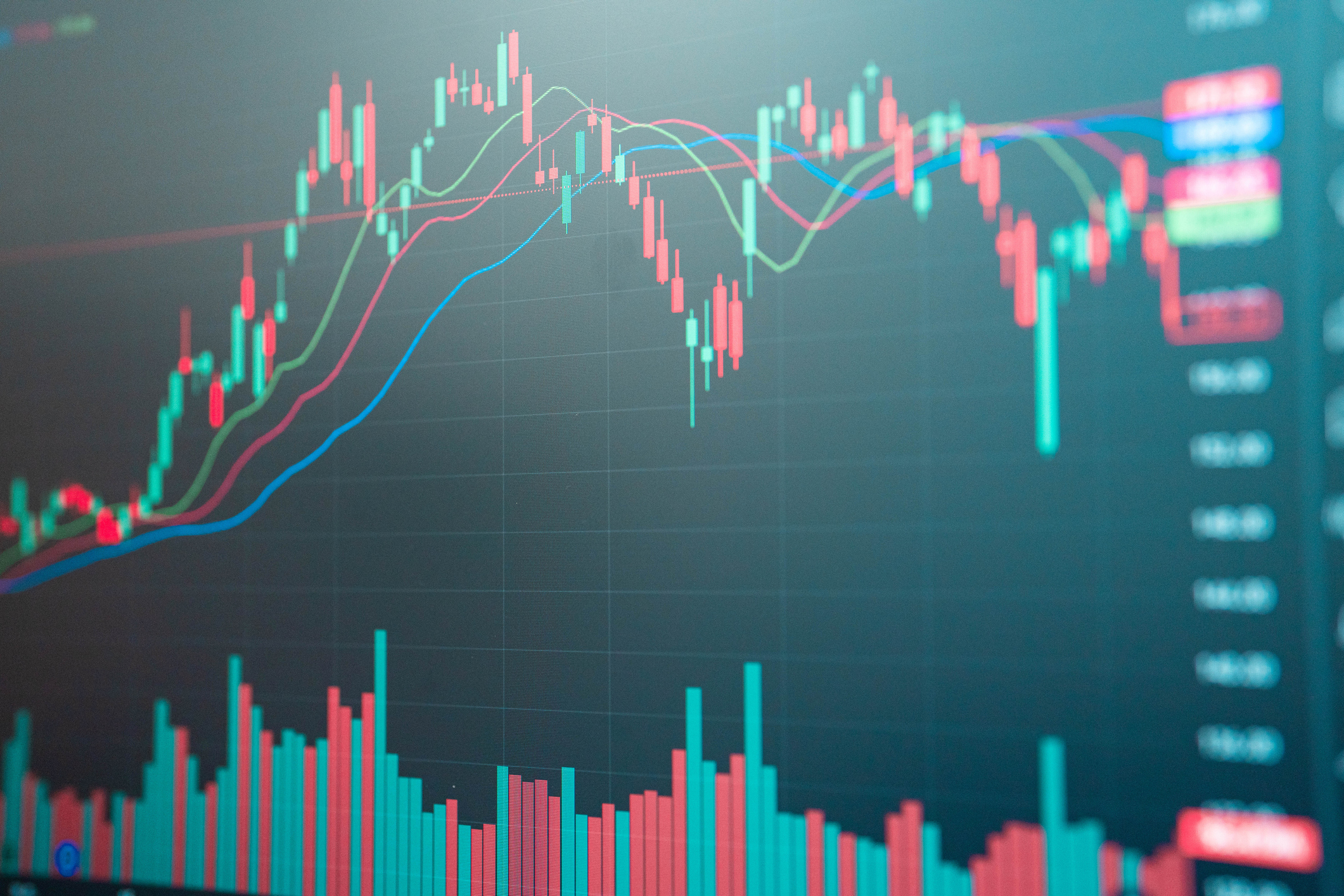U.S. Voters, Politicians to Blame for Ignoring National Debt Woes
Like my waistline, America’s long-term debt situation has changed. With the S&P's downgrade of the U.S.' credit rating, we’re belatedly accepting the truth.

Friday’s downgrading of U.S. debt by Standard & Poor’s prompted a range of responses: Some people shouted in anger. Some cried. Some sent an angry message to their congressman. Some people, no doubt, made decisions about rebalancing their investments.
I responded by throwing away a pair of pants. Let me explain.
I loved those pants -- black gabardine. Some happy moments, and some nice compliments, came my way while I was wearing those pants. Lately, though, my wife has been rolling her eyes whenever I put them on. I bought them a long time ago, when there was less of me. I have graciously accepted most aspects of aging, except for those pants. They were the last remnant of some good times, and I guess I didn’t want to admit that those times are over.

Sign up for Kiplinger’s Free E-Newsletters
Profit and prosper with the best of expert advice on investing, taxes, retirement, personal finance and more - straight to your e-mail.
Profit and prosper with the best of expert advice - straight to your e-mail.
It is much the same with America’s triple-A credit rating. In many ways, we have adjusted to the changes in our economy over the years, but we have resisted reality in other ways. The United States’ triple-A rating was an artifact of another time, and it had to change eventually. Fortunately, the practical implications of the downgrading aren’t that great, because it represents facts that financial markets have largely adjusted to already. They might be volatile in the next few days, but once the dust settles, it will be obvious that America’s relative position as the world’s best credit risk hasn’t changed.
In most ways, Americans have accepted how life has changed over the last few decades. It took a while, but most have come to believe that we don’t need to manufacture the underwear, bicycles and everything else we consume in order to be a healthy economy. We have accepted that agriculture is a big business and not a way of life for most people, and we’re finally considering big cuts to farm subsidies. We have accepted that health care expenses are growing too fast, and that something needs to be done about it.
Like me with my pants, however, we haven’t accepted the implications of longer life spans. We made a pension promise to retirees in 1935, setting a retirement age of 65 when life expectancy was 62 -- now it is 78. We haven’t raised the Social Security tax rate for 20 years and the Medicare rate for 25 (while health care costs rose much faster than inflation). When it should have been obvious that we had to raise taxes and curtail benefits, we vastly expanded entitlements in 2004 to include prescription drugs. Meanwhile, voters continue to resist raising any taxes; remember that President Obama opposes hikes for 95% of taxpayers. We still can’t agree on reducing spending -- even under the recent debt deal, discretionary spending will increase every year.
Standard & Poor’s was only facing reality. Back in the good old days (1990), government dropped everything and came to a bipartisan agreement when budget deficits exceeded 3% of annual gross domestic product. (Deficits were 9% of GDP last year, 10% this year.) At the time, the notion that public debt might climb above 40% of GDP was scandalizing. (It hit 69% this year and will reach 74% next year.) Politicians calmly discussed whether to fund entitlement programs for 25 years or 75 years. Even during some tough years in the 1980s when it looked like Japan and Europe had eclipsed the United States in economic prowess, there was never any doubt about America’s ability to service its debts.
One reason the downgrade won’t cause a stampede to other governments’ bonds is that other wealthy countries have the same problems, and their leaders are similarly struggling to face them. Europe’s major economies, by most measures, have government debts that are comparatively larger than ours, and their problems are compounded by the need to preserve the euro through a series of bailouts of struggling European Union members.
The S&P’s move is also debatable. Fitch & Moody's maintained their triple-A ratings for U.S. debt.
Consider the United Kingdom, which S&P still rates triple-A. Britain gets credit for making huge spending cuts (and raising taxes) while S&P rated our government dysfunctional. But the consensus in support of those policies in Britain is under siege as the nation’s economy has ground to a halt, dashing its budget projections. So is Britain’s debt a better risk in the next five years, which is S&P’s timeframe? Include Britain’s vast lending to its banks, and its debt-GDP ratio is 150%. While America’s households have sharply reduced debt since 2008, Britain’s haven’t. Total public and private debt in Britain is 500% of GDP, versus 300% in America. The British government may have acted more responsibly than ours so far, but I would argue America is still in a better position to service its debt.
Just as the credit rating agencies lost perspective in issuing high ratings for mortgage debt before the financial crisis, they failed to recognize the triple-A ratings bubble for rich, aging economies. S&P’s downgrade represents a popping of that bubble. And just as the fallout from the mortgage and housing bubble will last a long time, solving the global problem of excessive debt won’t be a quick process.
Get Kiplinger Today newsletter — free
Profit and prosper with the best of Kiplinger's advice on investing, taxes, retirement, personal finance and much more. Delivered daily. Enter your email in the box and click Sign Me Up.

-
 Stock Market Today: S&P 500, Dow Snap Win Streaks
Stock Market Today: S&P 500, Dow Snap Win StreaksBerkshire Hathaway shares tumbled after Warren Buffett said he'll step down as CEO of the holding company at the end of the year.
-
 The Best Energy Stocks to Buy
The Best Energy Stocks to BuyEnergy stocks can expose investors to volatile oil and gas prices. Here's how to find the best energy stocks to buy now.
-
 The Economic Impact of the US-China Trade War
The Economic Impact of the US-China Trade WarThe Letter The US-China trade war will impact US consumers and business. The decoupling process could be messy.
-
 AI Heads to Washington
AI Heads to WashingtonThe Kiplinger Letter There’s big opportunity for AI tools that analyze MRIs and other medical images. But also big challenges that clinicians and companies will have to overcome.
-
 The AI Doctor Coming to Read Your Test Results
The AI Doctor Coming to Read Your Test ResultsThe Kiplinger Letter There’s big opportunity for AI tools that analyze CAT scans, MRIs and other medical images. But there are also big challenges that human clinicians and tech companies will have to overcome.
-
 The New Space Age Takes Off
The New Space Age Takes OffThe Kiplinger Letter From fast broadband to SOS texting, space has never been more embedded in peoples’ lives. The future is even more exciting for rockets, satellites and emerging space tech.
-
 Rising AI Demand Stokes Undersea Investments
Rising AI Demand Stokes Undersea InvestmentsThe Kiplinger Letter As demand soars for AI, there’s a need to transport huge amounts of data across oceans. Tech giants have big plans for new submarine cables, including the longest ever.
-
 What DOGE is Doing Now
What DOGE is Doing NowThe Kiplinger Letter As Musk's DOGE pursues its ambitious agenda, uncertainty and legal challenges are mounting — causing frustration for Trump.
-
 A Move Away From Free Trade
A Move Away From Free TradeThe Letter President Trump says long-term gain will be worth short-term pain, but the pain could be significant this year.
-
 Trump’s Whirlwind Month of Crypto Moves
Trump’s Whirlwind Month of Crypto MovesThe Kiplinger Letter The Trump administration wants to strengthen U.S. leadership in the cryptocurrency industry by providing regulatory clarity.